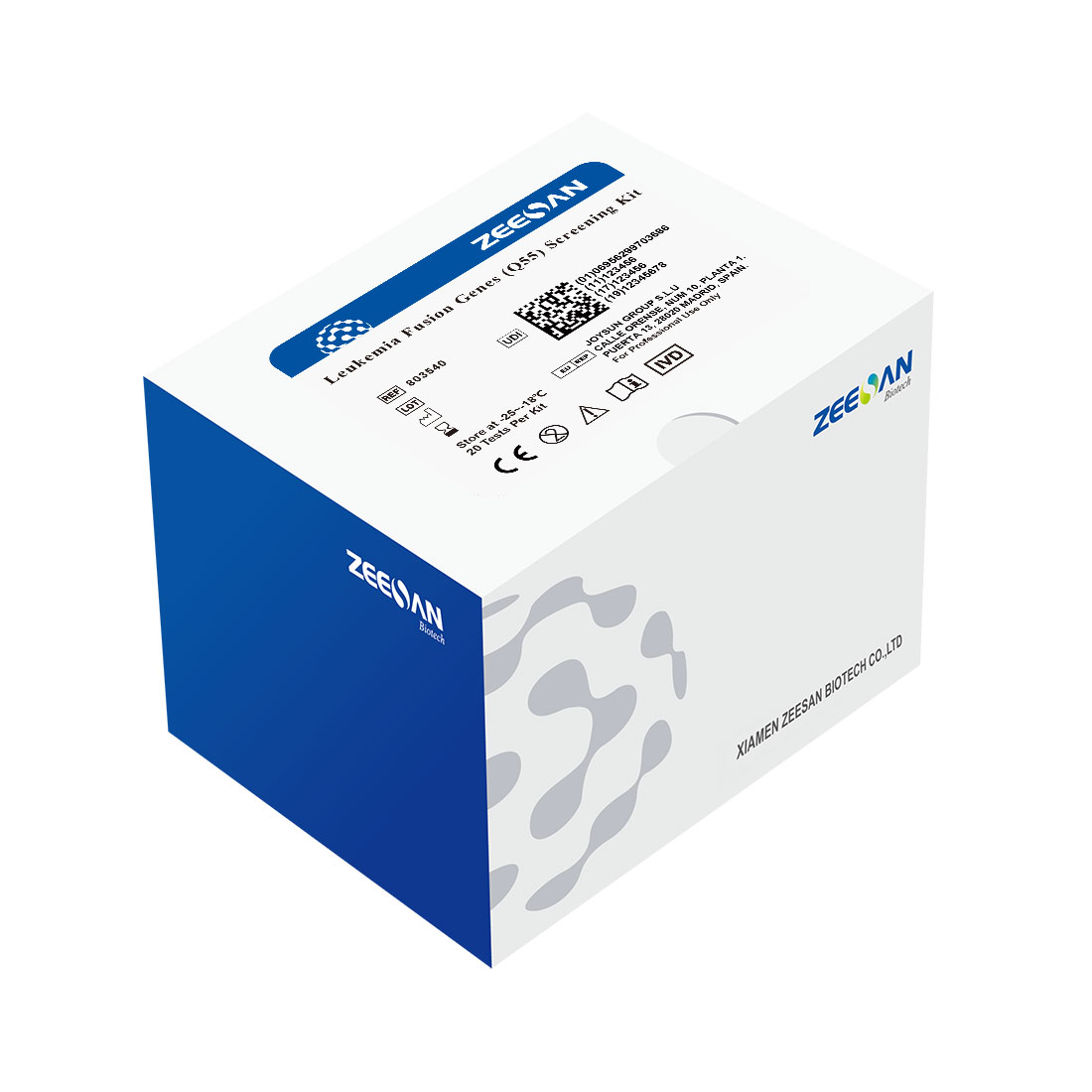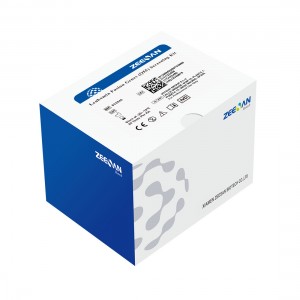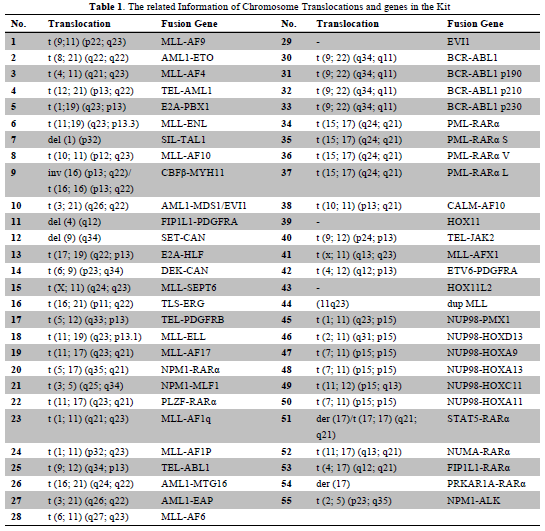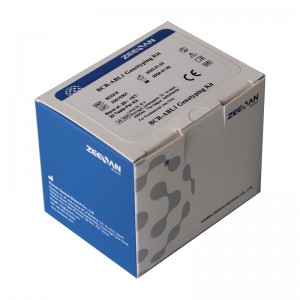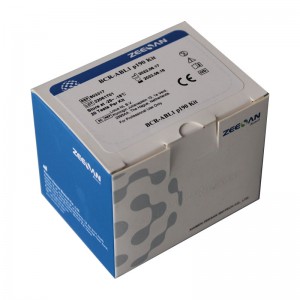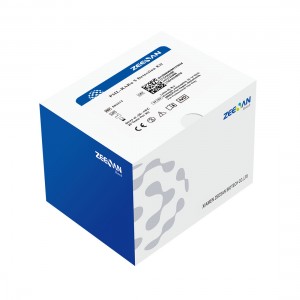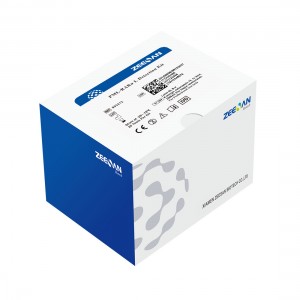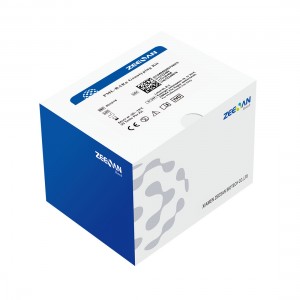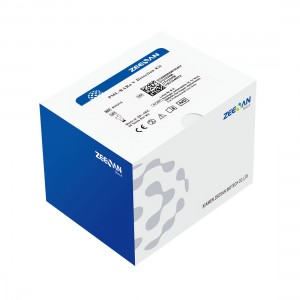
Product
Leukemia Fusion Genes (Q55)Screening Kit
The Leukemia Fusion Genes (Q55) Screening Kit is a qualitative multiplex assay developed to detect 55 leukemia-associated genes. These include 52 fusion genes formed by chromosome translocations, which are linked to both chronic and acute leukemias, along with 3 other leukemia-related genes: EVI1, HOX11, and HOX11L (see Table 1). These 52 fusion genes encompass over 182 clinically relevant chromosomal breakpoints.
The kit utilizes an RT-qPCR procedure to detect RNA transcripts of fusion genes extracted from human bone marrow or peripheral whole blood samples. Its results enable professionals to gain a better understanding of the patient’s prognosis and provide valuable insights for treatment planning.
Principle
Leukemia Fusion Genes (Q55)Screening Kit is a multiplex RT-qPCR based assay for detection of the 55 leukemia-associated genes transcripts including EVI1, HOX11, HOX11L2 and 52 fusion genes in total RNA from human bone marrow or peripheral whole blood samples. Included in the kit are RT reaction mix and qPCR mix. cDNA is synthesized by adding purified total RNA to the RT reaction mix prepared in advance. The resulting cDNA is added to 12 qPCR reaction tubes, which contain specific PCR primers and probes for detection of the 55 leukemia-associated genes and an internal control gene of GUSB.
The qPCR is performed in a real-time thermal cycler with optical filters for the detection of FAM, ROX, HEX and Cy5 fluorescence signals. Amplification plots and the resulting Cq (quantification cycle) values are used for the identification of the 55 leukemia-associated genes transcript.
The kit detects fusion gene transcripts using specific PCR primers and probes. The translocation specific primers bind to exons in the fusion gene enabling amplification of the region containing clinically relevant breakpoint, and the amplicons are detected by the translocation specific probes. The detection of the GUSB gene serves as an internal control, ensuring the integrity of the RNA sample and validating the functionality of both the cDNA synthesis and qPCR reactions.
For Research Use Only
Interested to Know More about Our Solution to Molecular Diagnostics?

